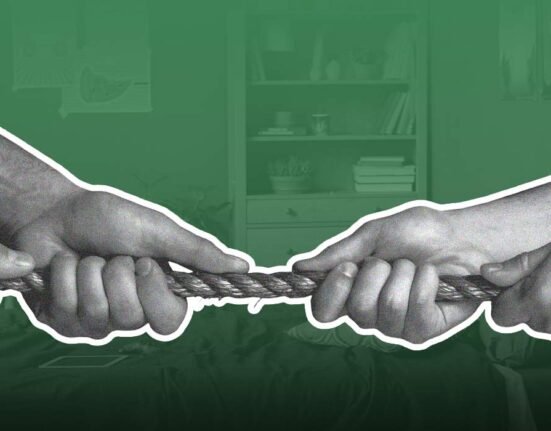When a marriage ends, the most important concern for many parents is ensuring their children come through the transition as unharmed as possible. In fact, with the right support and strategies, children of separated parents can still flourish. This article explores effective interventions that promote child well-being in co-parenting situations. We will walk through key strategies, practical tools, and research-backed advice designed to help parents protect and support their children during and after divorce.
1. Establishing a Consistent Co-Parenting Plan
A clearly defined parenting plan is crucial in reducing confusion and tension. When parents present a united, consistent structure, it helps children feel secure and reduces pre-divorce stress. Elements of a strong plan include:
- Regular schedules: Predictable time with each parent reduces anxiety and gives children stability.
- Reliable communication protocols: Deciding how to share custody details (e.g., shared digital calendars, weekly emails) means fewer miscommunications.
- Crisis planning: Knowing in advance what steps to take in emergencies or when disagreements arise minimises stress.
Research shows that clear and respectful co-parenting plans correlate with lower conflict levels and better adjustment in children (Emery, 2011).
2. Enhancing Communication Between Co-Parents
Children pick up on parental tension. When communication between parents becomes respectful and child-focused, children suffer less stress. Proven techniques include:
- “No conflict zone” rules: Parents agree to no fighting in front of children.
- Neutral platforms: Using communication tools like OurFamilyWizard reduces back-and-forth friction by keeping messages clear and professional (Sbarra & Emery, 2005).
- Co-parenting counselling or coaching: Professionals can teach respectful communication, negotiation skills, and shared parenting values.
Studies confirm that low parental conflict after divorce supports healthier emotional and behavioural development in children (Amato & Afifi, 2006).
Read More: Divorce from a Child’s Lens
3. Implementing Family Therapy and Parent Training
Divorce is intense, and family therapy can help everyone process emotions and learn new tools. Types of intervention:
- Parent-child relationship therapy: This helps parents rebuild connections with their children despite co-parenting challenges.
- Group-based parent training programs: Programs like “New Beginnings” teach parents to reduce conflict, improve communication, and encourage healthy emotional habits in children (Wolchik et al., 2013).
- Joint counselling sessions: Facilitated discussions reduce ambiguity and clarify co-parenting goals.
These evidence-based programs produce long-lasting benefits, including improved child adjustment, fewer behaviour problems, and better parent–child relationships (Wolchik et al., 2013).
4. Supporting Emotional Resilience in Children
Divorce can trigger fear, sadness, guilt, and uncertainty. Targeted interventions to support emotional resilience can help children navigate these feelings. Strategies include:
- Child-focused education: Parents and teachers trained to recognise and respond to stress signals can offer early help.
- Coaching emotional language: Parents practising validation help children feel understood and supported.
- Peer support groups: Children who connect with peers experiencing similar changes gain emotional relief, normalise feelings, and learn healthy coping strategies.
Educational programs for children following separation have been shown to reduce anxiety, behavioural issues, and improve coping skills.
5. Encouraging Cooperative Parenting Practices
Shared decision-making builds normalcy and safeguards the parent–child relationship. Cooperative habits include:
- Shared responsibilities: Making decisions together about school, medical care, and social activities supports a sense of family unity.
- Respectful boundaries: Balancing cooperation with clear, distinct roles fosters mutual trust and respect.
- Unified parenting values: Consistency in discipline, bedtime routines, and educational support makes children feel cared for and understood.
Research shows children thrive when both parents stay involved and aligned in parenting after divorce.
6. Monitoring and Supporting Academic Achievement
Disrupted schooling can hinder children’s learning progress. Co-parenting interventions that target school support make a difference. Steps that help include:
- Shared academic oversight: Both parents attending school meetings, conferences, and teacher interactions keeps them informed and active.
- Homework routines: Establishing an agreed-upon approach to homework helps with consistency when children move between homes.
- Tutoring or mentoring: Extra academic help can reduce anxiety about school performance and build confidence.
Studies suggest that consistent academic involvement from both parents stresses stability and elevates student outcomes (Pruett, 2016).
7. Using Mediation and Conflict Resolution Tools
In high-conflict cases, neutral third parties can guide productive parenting negotiations. Tools to consider:
- Co-parenting mediation: Neutral mediators help parents create workable parenting agreements through structured negotiation.
- Conflict-coaching models: Skilled coaches teach parents to manage disputes, collaborate on co-parenting, and keep disputes child-centred.
- Court-connected programs: Many family courts offer resources in the form of workshops, counselling referrals, etc. that reduce court-related conflict and empower parents.
Mediation has proven effective in decreasing conflict and stress, resulting in more stable parenting arrangements over time (Kelly, 2004).
8. Prioritising Parent Self-Care and Emotional Health
Happy parents raise happier children. Co-parenting after divorce is emotionally taxing, and parental well-being directly affects a child’s environment. Much-needed self-care includes:
- Personal therapy or support groups: These help parents process emotions, develop resilience, and focus on their children’s needs.
- Peer co-parenting support: Hearing from others in similar situations offers validation, perspective, and practical advice.
- Self-care habits: Prioritising sufficient sleep, exercise, hobbies, and social interaction gives parents the emotional capacity needed for calm co-parenting.
When parents are mentally healthy, they are more available, balanced, and effective in supporting their children.
9. Giving Children Accurate and Age-Appropriate Explanations
A child’s understanding of divorce depends on their age and developmental level. Guided communication helps children cope. Age-appropriate guidance:
- Young children (3 to 5 years): Keep explanations clear and simple, such as: “Mom and Dad are going to live in different homes, but we both love you.”
- School-age children (6 to 12 years): Encourage questions and co-create routines. Address worries about safety, loyalty, and fairness.
- Adolescents: Treat them as partners. Respect their input on schedules, finances, and parenting arrangements.
Studies indicate that when parents are honest while maintaining emotional calm, children experience less confusion and fear (Hetherington & Kelly, 2002).
10. Reviewing and Adjusting Parenting Plans Over Time
Children’s needs change quickly. Regular assessment ensures the co-parenting framework continues to work. Review processes include:
- Check-in schedules: formal discussions every six months to evaluate what is working and adjust what is not.
- Adaptability as children grow: plans need to reflect age-appropriate input, extracurricular demands, and evolving emotional needs.
- Professional reviews: when communication breaks down, revisiting plans with a counsellor or mediator can reduce conflict and ensure agreements stay current.
Flexible parenting plans yield better long-term child outcomes than rigid, outdated ones.
Conclusion
Co-parenting after divorce is far from easy, yet it is entirely possible to support children’s healthy development with the right tools and mindset. We have covered powerful strategies from creating clear parenting agreements to learning respectful communication, seeking therapy, and prioritising emotional resilience in children. Supporting academic stability, using mediation when necessary, and respecting children’s developmental understanding is vital. Consistent parental care, self-care for parents, and regular plan reviews keep the system responsive and effective. When both parents commit to open and honest cooperation, supported by evidence-based programs or professional guidance, children are much more likely to navigate the divorce well. The goal is not just to get through today, but to create strong foundations for confidence, emotional health, and trusting relationships in children.
FAQs
1. Do children always benefit when both parents stay involved?
Most evidence indicates that children benefit when both parents remain active in their lives following separation. Consistency, emotional support, and balanced involvement contribute to healthy development.
2. Can mediation help when co-parenting is difficult?
Yes, mediation with a neutral third party often helps parents work out shared agreements without heated arguments. Research shows it lowers conflict, improves parenting agreements, and protects children.
3. How do I explain divorce to my child?
Choose simple and age-appropriate language. Offer reassurance that both parents remain committed and that the change is not their fault. Avoid blame and focus on the continuity of care.
4. When is family therapy recommended?
Consider family therapy if communication is high-conflict or children show emotional or behavioural challenges. Therapy sessions offer a guided space to improve co-parenting, parental consistency, and emotional connection.
5. Should parenting plans be revisited over time?
Yes, children’s developmental needs and family dynamics shift. Regular check-ins every six to twelve months help identify issues and approve adjustments as needed.
References +
- Amato, P. R., & Afifi, T. D. (2006). Feeling caught between parents: Adult children’s relations with parents and subjective well-being. Journal of Marriage and Family, 68(1), 222–235. https://doi.org/10.1111/j.1741-3737.2006.00243.x
- Emery, R. E. (2011). Renegotiating family relationships: Divorce, child custody, and mediation (2nd ed.). Guilford Press.
- Hetherington, E. M., & Kelly, J. (2002). For better or for worse: Divorce reconsidered. Norton.
- Kelly, J. B. (2004). Family mediation research: Is there empirical support for the field? Conflict Resolution Quarterly, 22(1–2), 3–35. https://doi.org/10.1002/crq.90
- Sbarra, D. A., & Emery, R. E. (2005). Coparental conflict, nonresident father involvement, and parent–child relationships. Journal of Family Psychology, 19(3), 314–323.
- Wolchik, S. A., Sandler, I. N. et al. (2013). Six-Year Follow-up of Preventive Interventions for Children of Divorce: A Randomized Controlled Trial. The Journal of American Medical Association, 288 (15), 1874-81. https://doi.org/10.1001/jama.288.15.1874
- Pruett, M. K., Cowan, C. P., Cowan, P. A., Pradhan, L., Robins, S., & Pruett, K. D. (2016). Supporting father involvement in the context of separation and divorce. In Oxford University Press eBooks (pp. 85–117). https://doi.org/10.1093/med:psych/9780199396580.003.0005













Leave feedback about this